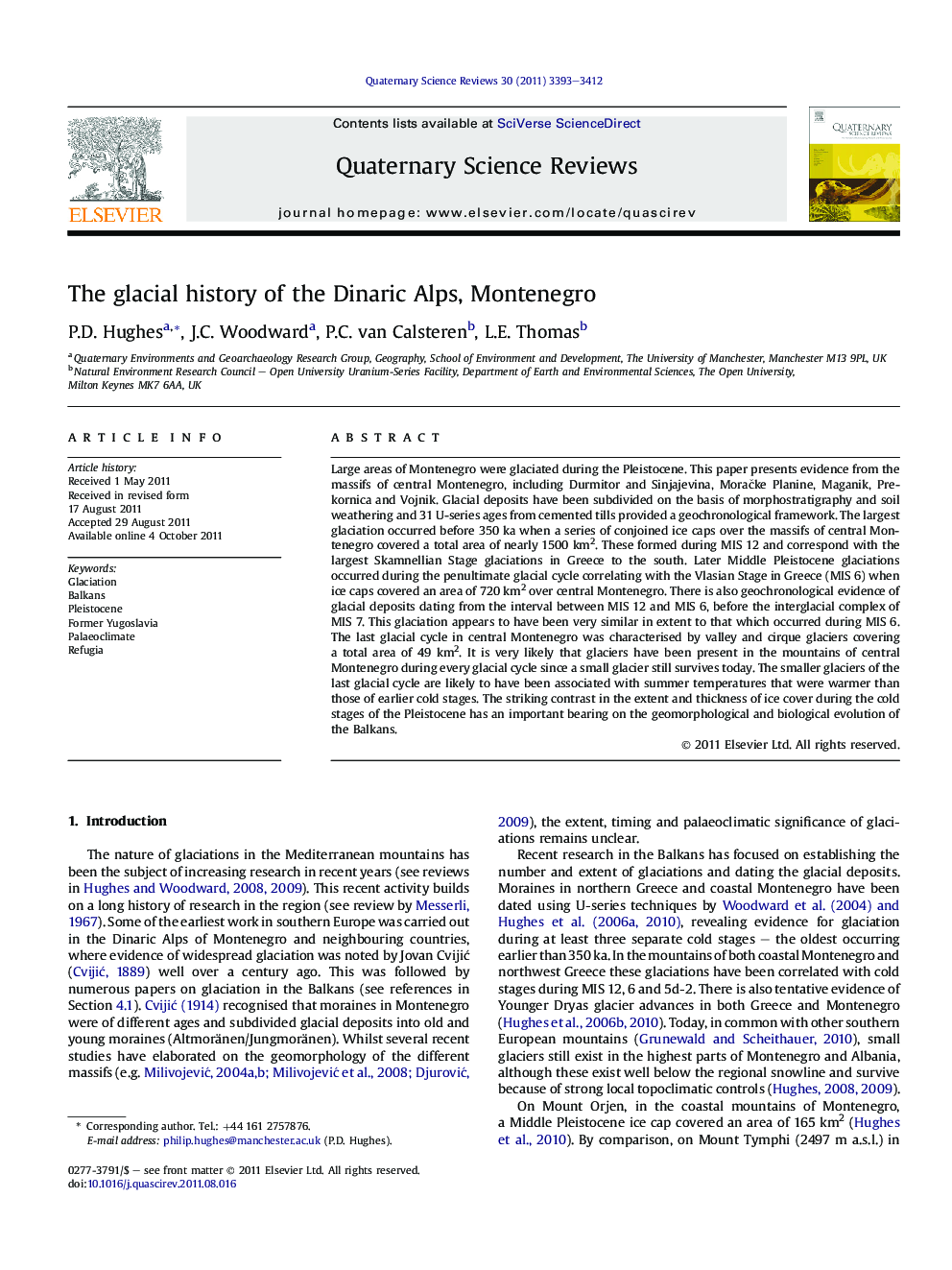| کد مقاله | کد نشریه | سال انتشار | مقاله انگلیسی | نسخه تمام متن |
|---|---|---|---|---|
| 4735827 | 1640906 | 2011 | 20 صفحه PDF | دانلود رایگان |

Large areas of Montenegro were glaciated during the Pleistocene. This paper presents evidence from the massifs of central Montenegro, including Durmitor and Sinjajevina, Moračke Planine, Maganik, Prekornica and Vojnik. Glacial deposits have been subdivided on the basis of morphostratigraphy and soil weathering and 31 U-series ages from cemented tills provided a geochronological framework. The largest glaciation occurred before 350 ka when a series of conjoined ice caps over the massifs of central Montenegro covered a total area of nearly 1500 km2. These formed during MIS 12 and correspond with the largest Skamnellian Stage glaciations in Greece to the south. Later Middle Pleistocene glaciations occurred during the penultimate glacial cycle correlating with the Vlasian Stage in Greece (MIS 6) when ice caps covered an area of 720 km2 over central Montenegro. There is also geochronological evidence of glacial deposits dating from the interval between MIS 12 and MIS 6, before the interglacial complex of MIS 7. This glaciation appears to have been very similar in extent to that which occurred during MIS 6. The last glacial cycle in central Montenegro was characterised by valley and cirque glaciers covering a total area of 49 km2. It is very likely that glaciers have been present in the mountains of central Montenegro during every glacial cycle since a small glacier still survives today. The smaller glaciers of the last glacial cycle are likely to have been associated with summer temperatures that were warmer than those of earlier cold stages. The striking contrast in the extent and thickness of ice cover during the cold stages of the Pleistocene has an important bearing on the geomorphological and biological evolution of the Balkans.
► Middle Pleistocene ice caps in central Montenegro covered an area of nearly 1500 km2, including over the Durmitor massif.
► U-series ages indicate that the most extensive glaciation occurred before 350 ka during MIS 12 (c. 470–420 ka).
► Later, less extensive, glaciations occurred during MIS 10-6 (360–130 ka) and MIS 5d-2.
► Cirque and valley glaciers were also present during the Younger Dryas and a modern Holocene glacier still survives today.
► Glaciers exerted considerable influence on geomorphological and biological evolution of the Balkans.
Journal: Quaternary Science Reviews - Volume 30, Issues 23–24, November 2011, Pages 3393–3412